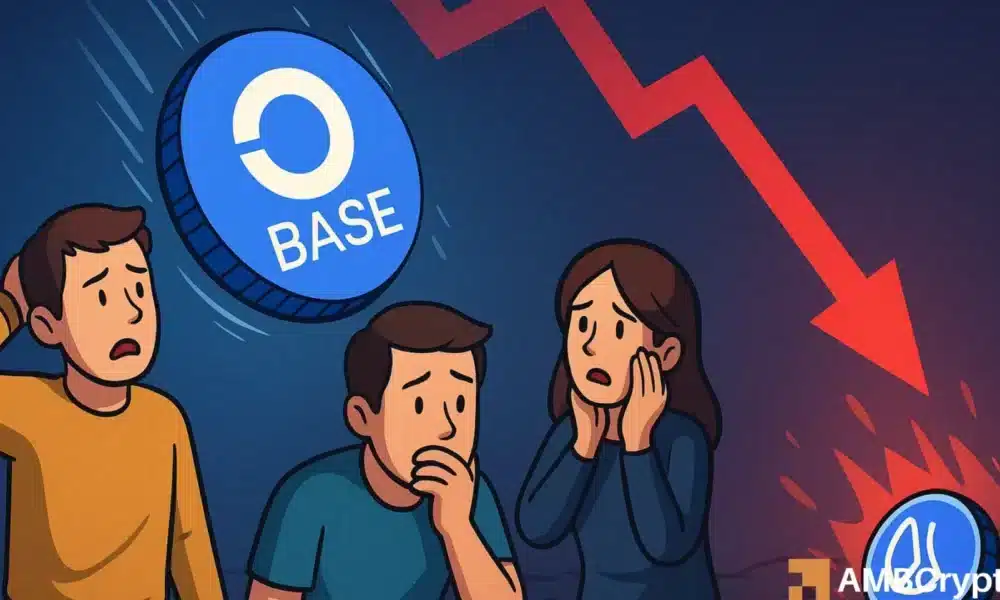Blast: A Cautionary Tale of Ethereum’s Once-Promising Layer-2 Network
The crypto market is notorious for its volatility, and few examples encapsulate this better than Blast, once regarded as Ethereum’s second-largest Layer-2 network. Currently, Blast’s Total Value Locked (TVL) has plummeted dramatically, raising questions about its sustainability and future growth. At a trading price of $0.002570, a meager 0.62% increase over the last 24 hours, Blast’s ecosystem is in trouble. Just a year ago, the platform was thriving, boasting a TVL of $2.2 billion just before its much-anticipated token generation event (TGE). Fast forward to today, and that figure has shrunk to a mere $65 million, marking a staggering 97% decline from its peak and a 30% drop in just the past month, indicating a mass exodus of users seeking greener pastures.
The reasons behind Blast’s downturn can largely be traced to its controversial launch strategy and subsequent execution. The project initiated its deposit vault in November 2023, followed by the mainnet launch in February 2024. This launch came with farming incentives and Blast Gold rewards, drawing in users who aimed to capitalize on airdrop opportunities reminiscent of the Blur airdrop success in February 2023. Spearheaded by developer PacMan and supported by investment firm Paradigm, this initial excitement ultimately failed to transition into stable user adoption. Instead of meeting the optimistic market projections of a $5 to $10 billion market cap, Blast debuted at just $2.9 billion, triggering a rapid 60% decline in TVL within two months. This early misstep has left Blast grappling for viability in the fiercely competitive Layer 2 space.
Despite recent downturns and criticisms, some analysts maintain a hopeful outlook for the BLAST token. According to AMBCrypto’s price predictions, the token could achieve a price of $0.0041 by 2025 under a bullish scenario, and progress to $0.0048 in 2026. There’s even a long-term projection suggesting a peak price of $0.015 by 2036, which hints that while Blast is currently facing substantial challenges, its longer-term trajectory might remain positive. Such forecasts suggest that while Blast is currently in a precarious state, there is potential for recovery, provided it can address the shortcomings of its initial strategy and establish a loyal user base.
To regain user trust and improve its TVL, Blast must focus on more than just attractive airdrop schemes. Creating a sustainable ecosystem that supports developers and incentivizes users through better utility and functionality is crucial. Moreover, enhancing the overall user experience on the platform will be pivotal in attracting and retaining a vibrant community. Understanding user preferences, iterating on product offerings, and stabilizing the network’s infrastructure could ultimately be the keys to revitalizing its standing in the Ethereum Layer-2 domain.
Additionally, a more strategic marketing approach to highlight the unique features and advantages of using Blast could help in rekindling interest. Communicating the value proposition of its technology to potential users and developers is essential for building a robust community around the platform. By establishing partnerships with other projects and fostering collaboration within the Ethereum ecosystem, Blast could enhance its visibility and appeal, encouraging more users to consider returning.
In conclusion, Blast serves as a cautionary tale about the perils of hasty launches and the importance of sustaining user engagement. Though the platform faces significant hurdles after its dramatic decline in TVL, hope still flickers for its long-term prospects. By innovating and refining its offerings, Blast can position itself for a potential rebound in the chaotic but ever-evolving world of cryptocurrency. As the crypto community continues to watch, the focus will be on whether Blast can rebound from its misfortunes and reclaim its former glory in the Ethereum Layer-2 space.


